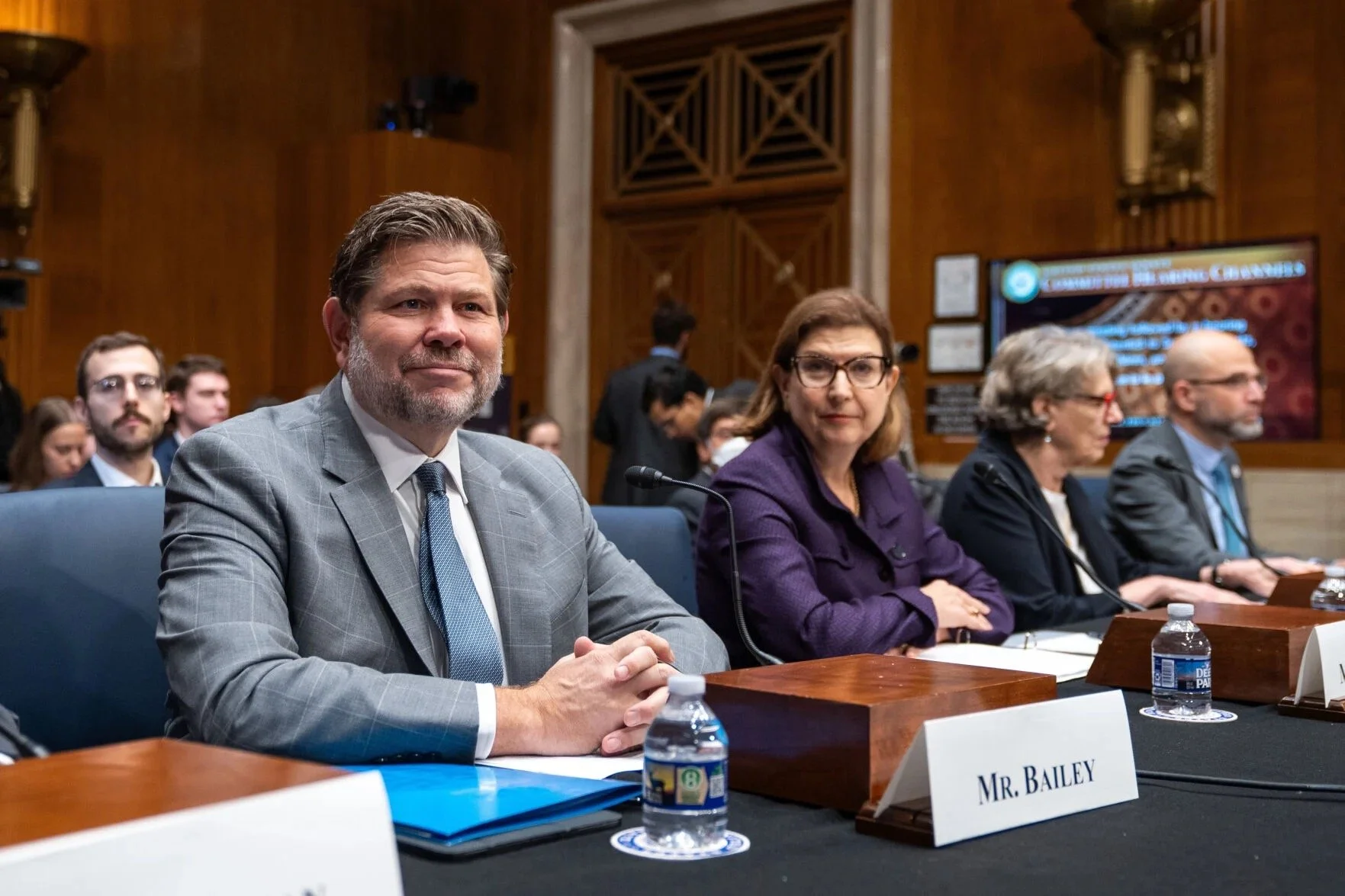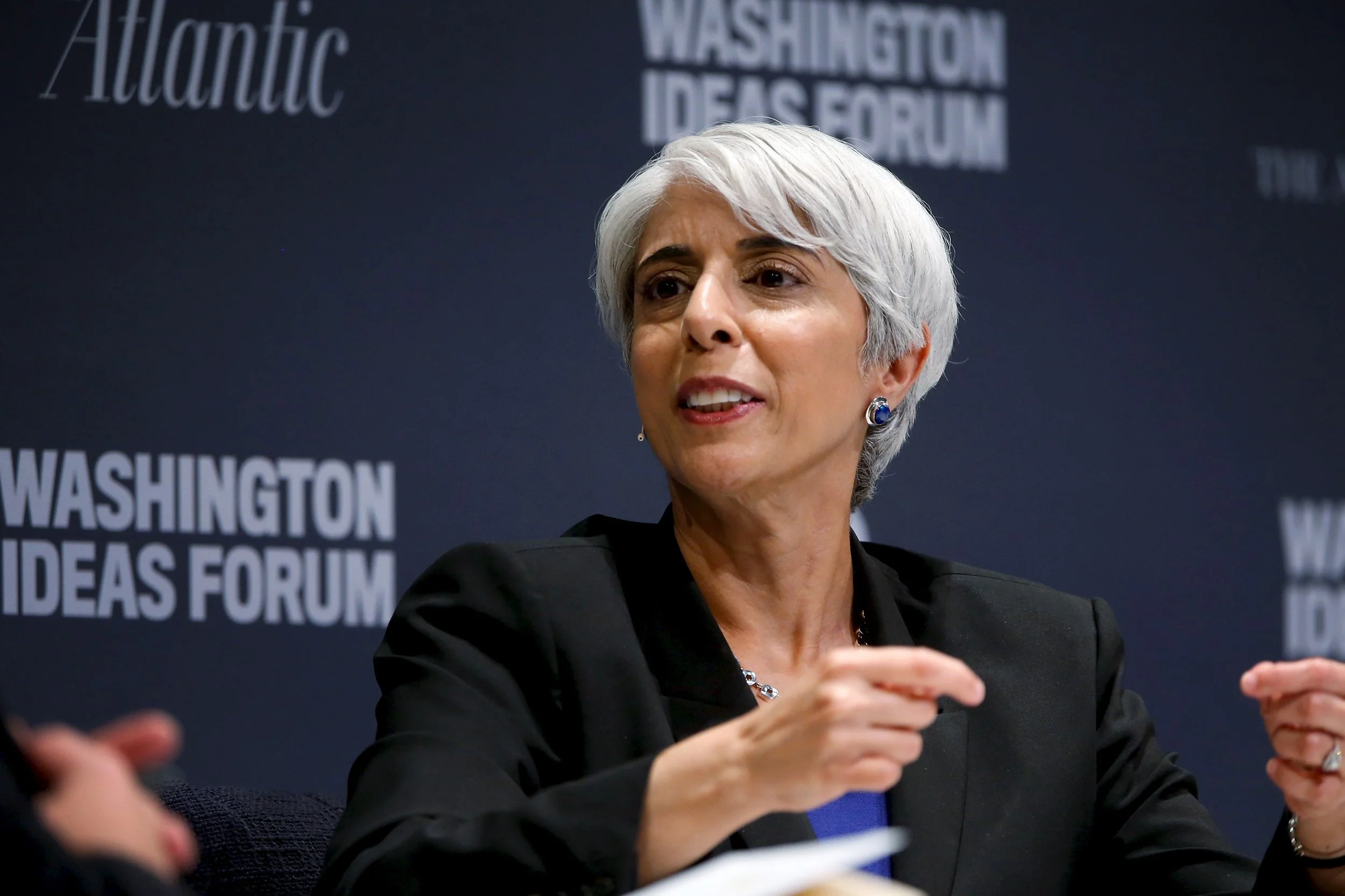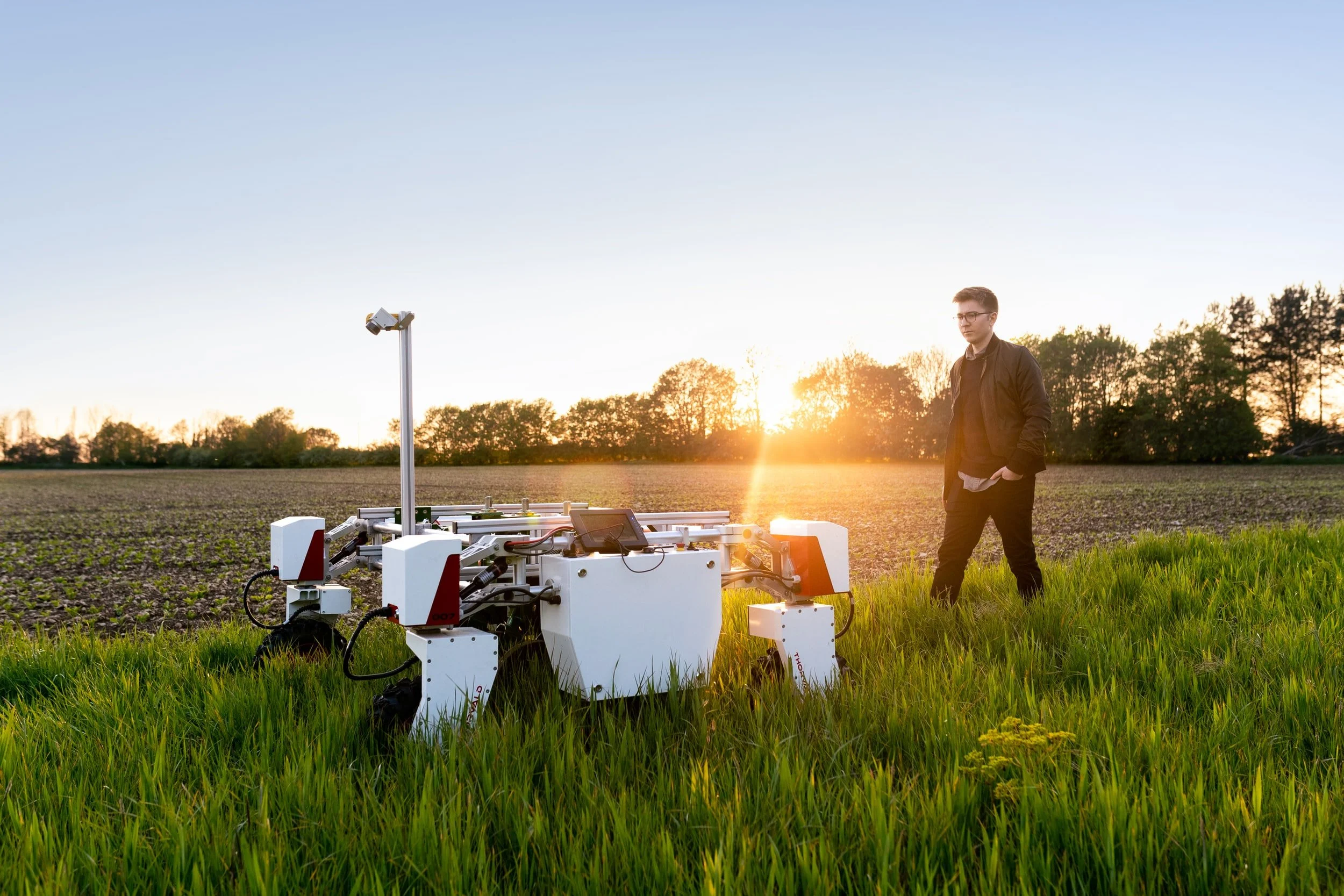There is an incredible amount of excitement and confusion around what this wave of generative AI means for education. These technologies are rapidly improving, and developers are introducing capabilities that would have been considered science fiction just a few years ago. In my latest Education Next piece, I provide an overview of generative AI and explore how this technology will influence how students learn, how teachers work, and ultimately how we structure our education system.
Treading Carefully: The Precautionary Principle in AI Development
The Biden administration recently secured voluntary commitments from major AI companies to manage risks associated with AI, including ensuring products are safe and transparent about capabilities and limitations. While a step in the right direction, the vague pledges largely reaffirm existing activities and oversight mechanisms are unclear. This embodies the precautionary principle which can hamper innovation if taken too far through accumulating requirements. There should be a balance between risk mitigation and advancing AI to realize its benefits. The commitments are also oriented toward avoiding harms rather than proactively leveraging AI's potential to address pressing societal challenges like climate change and learning loss. A more ambitious, benefit-focused approach is needed alongside reasonable precautions.
Leveraging AI’s Immense Capabilities While Safeguarding the Mental Health of Our YouthLeveraging AI’s Immense Capabilities While Safeguarding the Mental Health of Our Youth
The rise of artificial intelligence (AI) coincides with a concerning public health crisis of loneliness and isolation, particularly among young people. According to a CDC survey, a shocking 44% of adolescents are dealing with constant feelings of sadness and hopelessness. As AI technology becomes more prevalent, concerns are growing about its potential to worsen these emotional struggles. This new technological context necessitates a deeper investigation into the role AI might play in intensifying these existing societal issues.
Honored to Be Included in the Washingtonian Magazine's list of Most Influential People
Honored to be included in the Washingtonian Magazine's list of Most Influential People along with so many inspiring leaders. Wonderful to see many friends and colleagues on this list.
The Promise of Personalized Learning Never Delivered. Today’s AI Is Different
Over the past decade, many have been disappointed by the unfulfilled promises of technology transforming education. However, recent advancements in AI, such as OpenAI's GPT-4, may signal a genuine breakthrough. These large-language models have smarter capabilities, function as reasoning engines, use language as an interface, and are scaling rapidly thanks to tech giants. As a result, AI-powered tutoring and teaching assistants are emerging to provide individualized learning, automate administrative tasks, and offer constructive critiques on student writing. While there are limitations, it is expected that future iterations will address these issues. Harnessing AI's potential could lead to a future where education is more effective, equitable, and personalized, with teachers focusing on fostering meaningful connections with their students.
Modernizing State Services: Harnessing Technology for Enhanced Public Service Delivery
The COVID-19 pandemic has exposed the urgency for state governments to improve digital service delivery and address long-standing technology challenges. The Tech Talent Project, in collaboration with AEI, the Beeck Center for Social Impact + Innovation at Georgetown University, and New America, has released a report offering guidance for states to build technical capacity and avoid past pitfalls. I had the privilege of co-chairing this effort with Cecilia Muñoz Former Assistant to the President and Director, White House Domestic Policy Council.
From Automation to Reinvention: How AI Is Shifting the Nature of Work
The rise of AI technologies like ChatGPT promises to boost global GDP by 7% in a decade, according to Goldman Sachs. However, this may disrupt 63% of US jobs, including higher-skilled professions like auditors and interpreters. These AI tools will change the nature of work, shifting focus from mundane tasks to more advanced, human-centric activities. Surprisingly, AI could benefit the least skilled workers, narrowing the performance gap among employees. While job displacement is inevitable, the larger disruption may be the creation of new, hybrid jobs combining domain expertise with AI skills. Policymakers must proactively invest in education and workforce training to ease these transitions and capitalize on AI's productivity potential.
Building Trust in AI: A Call for Clear Guidelines to Harness Its Benefits
Policymakers have yet to fully understand the profound effect the AI revolution will have on our economy, national security, and social well-being. AI, for all its benefits, will also present new risks, challenges, and tensions with our values. To prevent the worst consequences of AI, clear regulations are needed to harness its benefits while managing its risks.
Assessing the Threat of AI Misuse in Disinformation Campaigns
OpenAI. Georgetown University’s Center for Security and Emerging Technology and the Stanford Internet Observatory wrote a provocative report surfacing misinformation risks posed by AI. The report provides a thoughtful framework through which to think about the threat of AI-enabled influence operations and some of the steps that can minimize those risks along with their associated trade-offs.
Quarantines, Not School Closures, Led to Devastating Losses in Math and Reading
The recent dismal results from the National Assessment of Educational Progress introduced a new learning-loss puzzle. It was assumed that states with more remote instruction would have lower academic scores than those with more in-person classes during the pandemic. But states that had more days of in-class learning also saw declines. The likely reason is due to the hidden disruptions to student learning caused by COVID quarantines.
Meet ChatGPT: The AI Chatbot That Can Write Code, Pass Exams, and Generate Business Ideas
Just over a week ago, OpenAI introduced ChatGPT, a cutting-edge artificial intelligence (AI) chatbot that uses a massive dataset to generate human-like responses to text-based inputs. In just five days, the chatbot reached over one million users, a milestone that took Facebook almost a year to achieve when it first launched. As we continue to develop and advance this technology, it will undoubtedly have a significant effect on the future of work and the way we approach tasks and responsibilities. It is important that we carefully consider how we can use AI to its full potential while also mitigating any possible negative effects. By doing so, we can ensure that AI will be a powerful and positive force for change.
A New Apprenticeship Requirement Could Slow Federally Funded Energy Projects
Federal Regulators Should Approve Election Prediction Markets
The US Commodity Futures Trading Commission (CFTC) continues to wrestle with how to best regulate prediction markets. The commission is expected to make a decision as soon as this week on whether the startup Kalshi can offer a market on the outcome of the upcoming midterms. Election prediction markets have proven to be a powerful tool for forecasting elections and are typically more accurate, timely, and complete than conventional methods. Kalshi’s proposal does not pose a risk to the integrity of the US election system. Approving Kalshi’s submission would be a step in the right direction for the commission and promotes the public interest
Why Arati Prabhakar is Uniquely Suited to Lead OSTP
On September 22, the Senate confirmed Arati Prabhakar as White House Office of Science and Technology Policy (OSTP) director, the first woman of color and immigrant to hold the position. Prabhakar is uniquely suited for navigating these challenges. She previously headed the Defense Advanced Research Projects Agency and the National Institute of Standards and Technology. She held several roles in Silicon Valley, including with the early-stage venture firm US Venture Partners, and she recently founded the nonprofit Actuate, which seeks to bring new actors to the table in developing solutions for areas such as climate, health, and trustworthy data. She will be able to draw on that public and private sector experience to shape how agencies stand up these new programs and design the guidelines and rules for new funding streams.
Implementing Federal Innovation Programs: A Road Map for States
An unexpectedly productive Congress has passed the Infrastructure Investment and Jobs Act (IIJA), CHIPS Act, and Inflation Reduction Act (IRA), which aim to improve America’s infrastructure, boost competitiveness with China, and accelerate new climate technologies. Attention now shifts to implementation. State and community leaders should begin work now to prepare for funding competitions on the horizon.
Implementing Federal Innovation Programs: A Road Map for States
An unexpectedly productive Congress has passed the Infrastructure Investment and Jobs Act (IIJA), CHIPS Act, and Inflation Reduction Act (IRA), which aim to improve America’s infrastructure, boost competitiveness with China, and accelerate new climate technologies. Attention now shifts to implementation. State and community leaders should begin work now to prepare for funding competitions on the horizon.
Congress Must Pass Innovation Legislation, Despite Hurdles
Senate leaders are expected to release updated text on a slimmed-down set of bills to bolster the US semiconductor chip industry. The measures will likely include $52 billion in subsidies and an investment tax credit to boost US manufacturing, but the rest of the Bipartisan Innovation Act (BIA) remains in limbo at a time when more urgent action is needed. Strengthening America’s leadership in science and innovation tomorrow will depend on three crucial areas of investments needed today in bolstering semiconductor manufacturing, boosting federal R&D, and addressing the talent gap.
Harnessing the Best of Automation While Minimizing the Downside Risks
The pandemic and economic disruptions have accelerated the adoption of automation technologies that will introduce important benefits to businesses and consumers but may also create disruptions for many workers and communities. Policymakers and leaders can take steps now to help navigate these disruptive changes.
American Space Achievements: Lessons from the Past Year
The past year was filled with incredible technological breakthroughs and moments of inspiration. We should celebrate these achievements, but also use them as a call for continued action to strengthen the pipelines that enable innovation. Federal policymakers and regulators should double down on using public-private partnerships and creating more regulatory room to test and scale innovations. One important element of this work should involve reviewing existing regulatory processes that may need modernization.
Washington DC’s 500 Most Influential People
Honored to be included in the Washingtonian Magazine's list of Most Influential People along with so many inspiring leaders. Wonderful to see many friends and colleagues on this list.
























